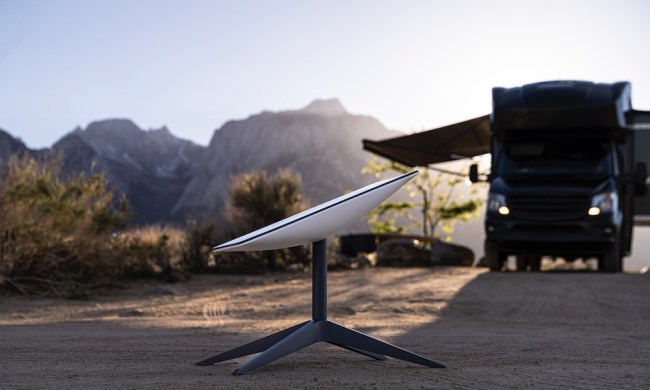SpaceX has now shipped 100,000 Starlink terminals to customers who’ve signed up for the company’s internet-from-space service.
SpaceX CEO Elon Musk dropped the news in a tweet on Monday, August 23. It means the company has added 90,000 new customers to its beta service in just six months. The company opened Starlink to its first paying customers in October 2020 and it now serves 12 countries, with more on the way.
Starlink uses a constellation of small satellites in low-Earth orbit to beam down broadband connectivity to customers on the ground using a Starlink dish.
SpaceX has been sending Starlink satellites into orbit since May 2019 and currently has more than 1,700 of them circling Earth.
The goal is to blanket the planet with affordable and reliable broadband connectivity, with a particular focus on communities in remote areas that have little or no access to decent internet services.
Starlink says current download speeds via its service should be around 100 Mbps, though reports online suggest they can be anywhere between 60 Mbps and 150 Mbps.
How to sign up to Starlink
First, you’ll need to find out if Starlink’s beta service is available your area. To do so, simply head to its website and fill in your details. If it’s accessible, you’ll be invited to sign up.
Customers in the U.S. will need to pay $499 for the necessary hardware, and then $99 a month for the internet service. Shipping and handling costs $50, with tax coming in at about $33. You can get the ball rolling by handing over a $99 deposit, and you’ll receive a notification when your order is ready to ship. Note the small print at the bottom of the page: “Depending on location, some orders may take six months or more to fulfill.”
SpaceX isn’t the only company working to provide internet connectivity via Earth-orbiting satellites. U.K.-based OneWeb is also building a constellation, with its most recent batch of satellites heading skyward just a few days ago. With 288 satellites in orbit and more on the way, OneWeb is planning to launch a trial broadband service in Alaska and Canada by the end of this year, with more locations coming in 2022. Amazon has also outlined plans for its Project Kuiper service that could comprise a constellation of some 3,200 satellites, though the company has yet perform any launches.


